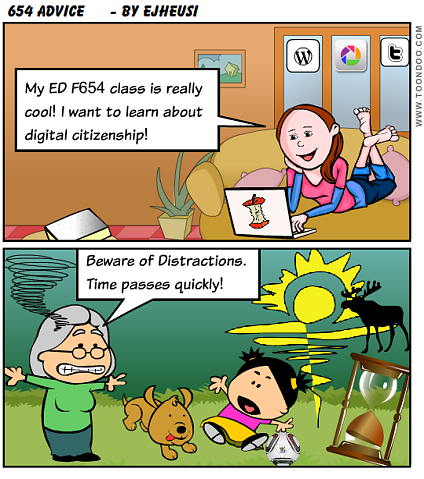When I began the course, I had a very sketchy idea of what it would be about. Each collection was a new adventure. Although some of the reading was slow going, the topics were interesting.Instead of digital citizenship being an undefined mass of possibilities, I now see distinct but interwoven elements to consider in my teaching and my own online activities. Digital citizenship is certainly an expansion on plain old citizenship because it is more far-reaching than one’s immediate physical community. I’ve heard the word ‘community’ bandied about for a long time, but it is now more real and something that I want to be a part of.
With some brainstorming, there are many elements from our course that I can incorporate in my teaching. In my accounting class I can bring new perspective, resources, and examples to a discussion of intangible assets such as copyrights. In my spreadsheets class, we can do collaboration activities using Google spreadsheets. In my business math class, we can do one to one communication with Google hangouts. I will also be checking that class for accessibility issues. My business communication class is likely the one where we can devote the most time to digital citizenship and weave it into almost every topic. That said, I know to start with one thing and build so that it doesn’t become overwhelming.
Parts of digital citizenship that I feel much more knowledgeable about are fair use and accessibility issues. Both have immediate impact on what and how I share with my students. I was amazed that we could have an online discussion with Doug Belshaw, the author of our assigned reading. This encourages me to be more bold and contact real people I encounter online that I consider experts on a given topic.
I will be a digital citizen by continuing to learn and participate in the digital environment. The connections with the students in this class is one that can be enjoyed in the future.
